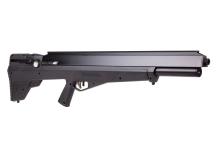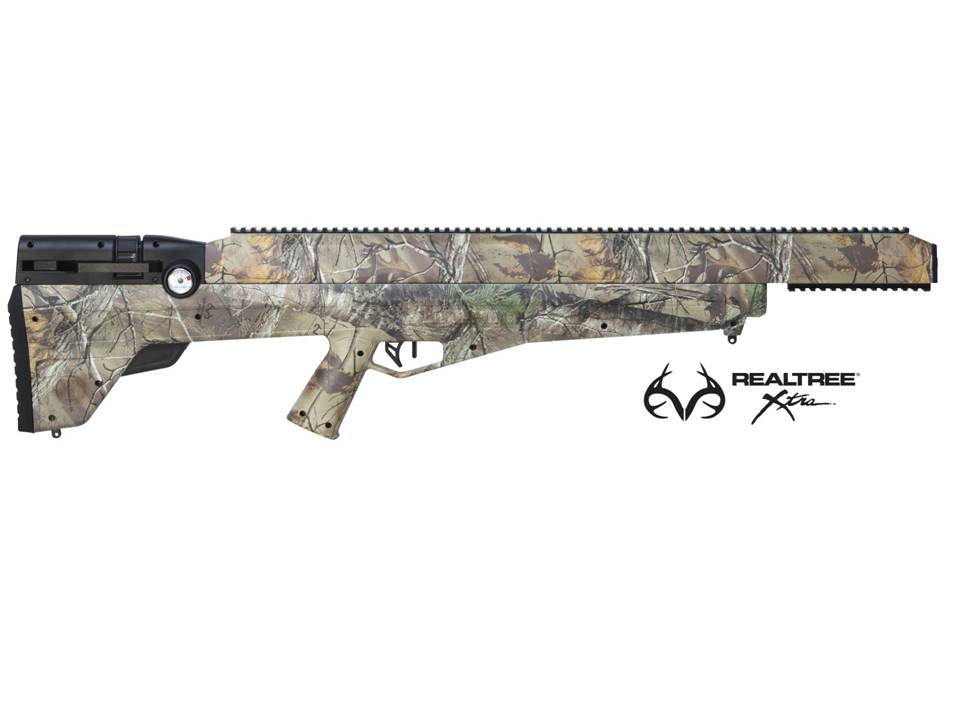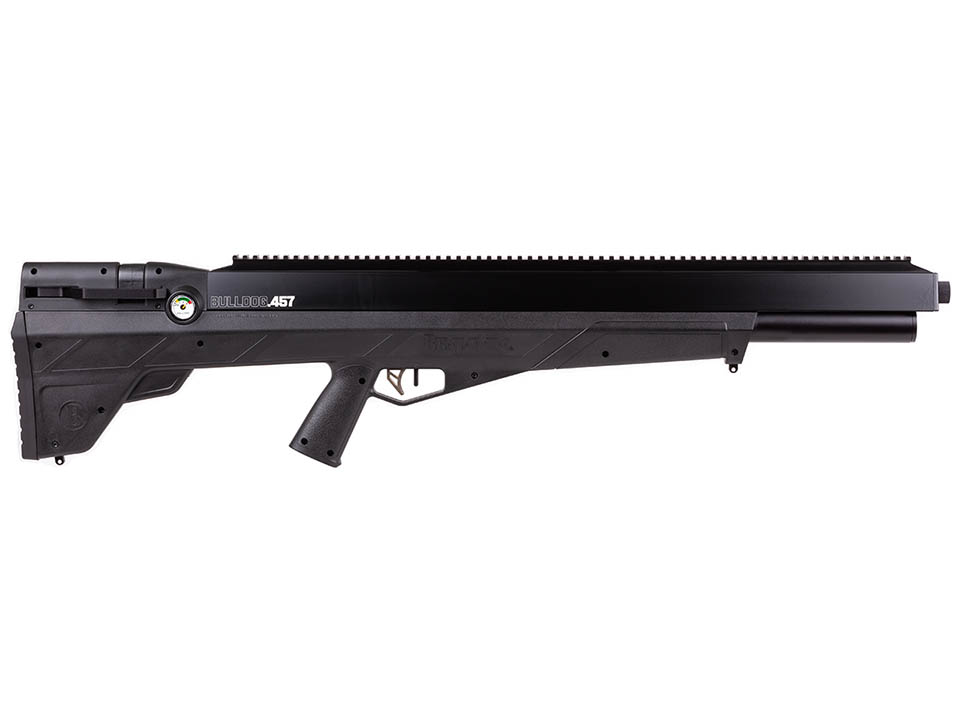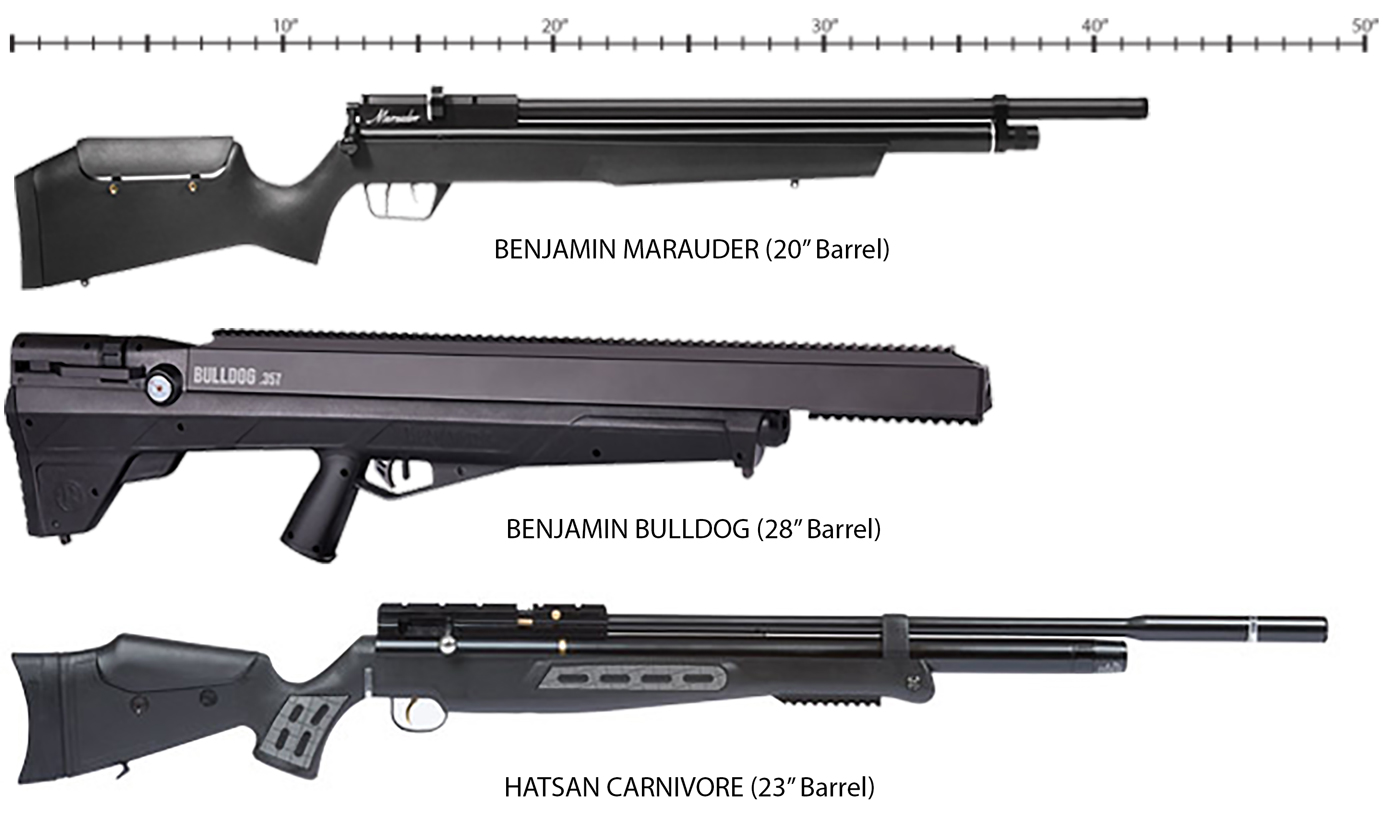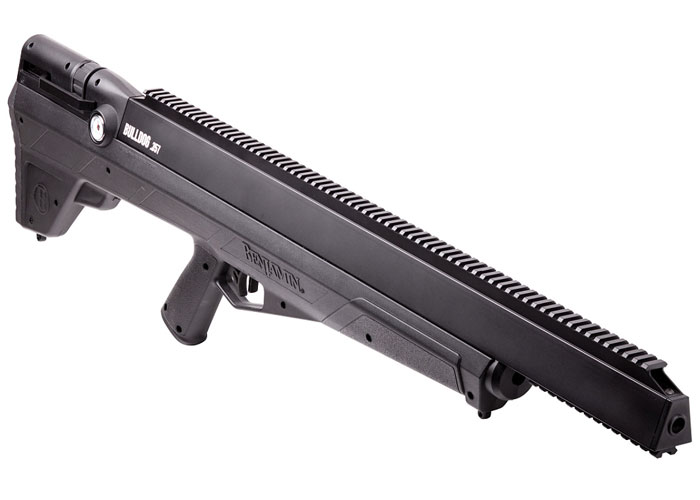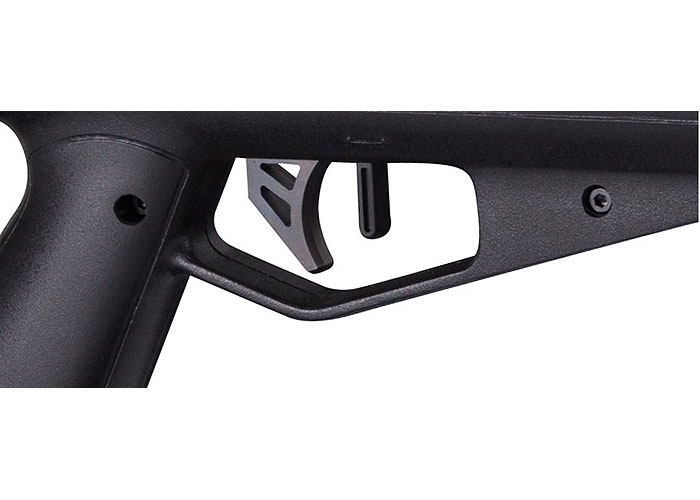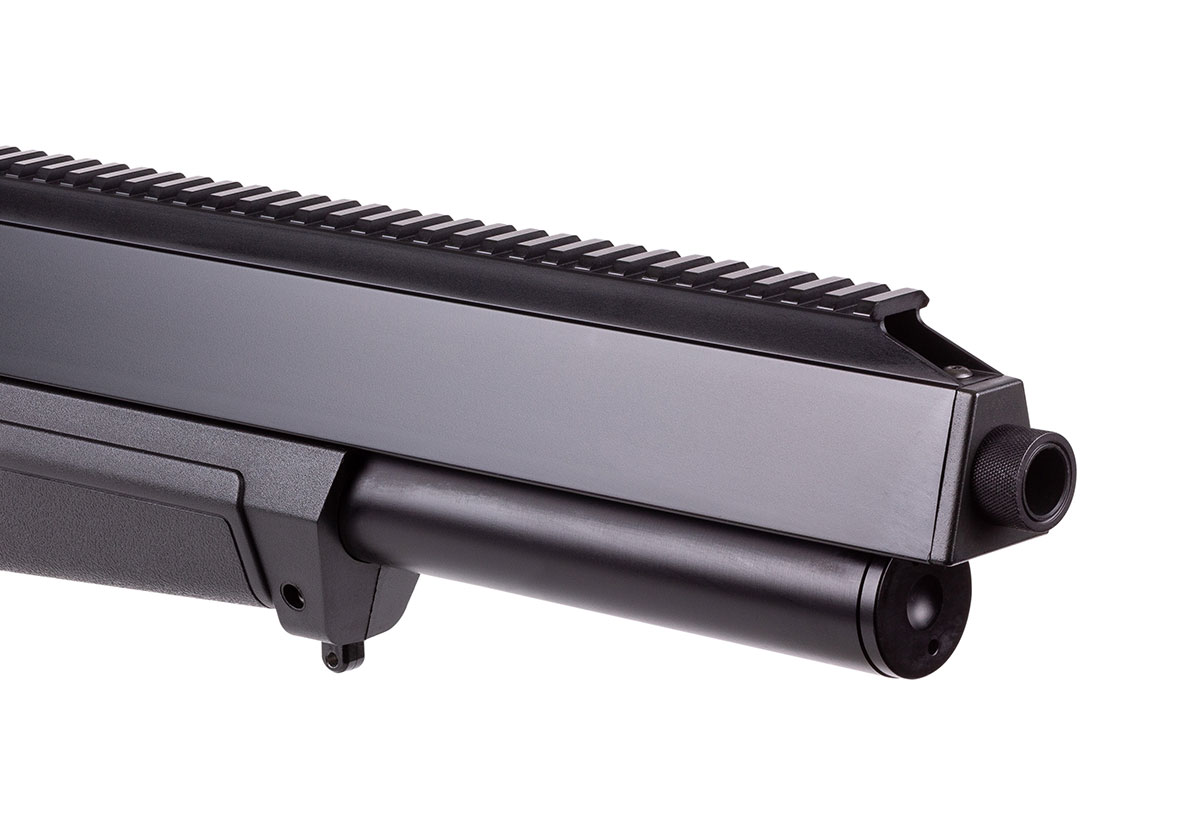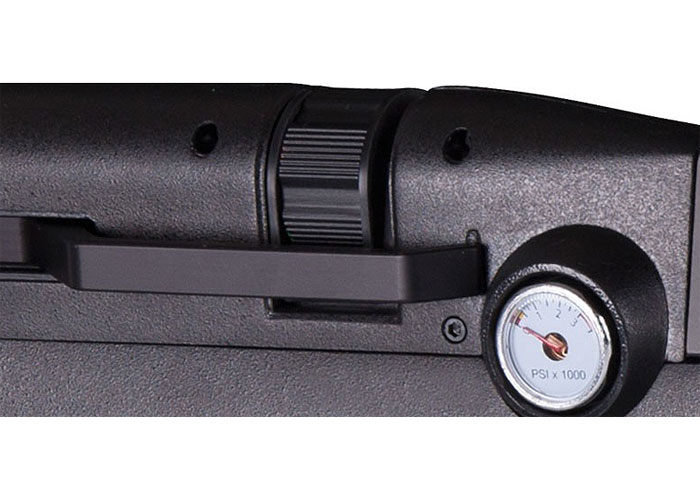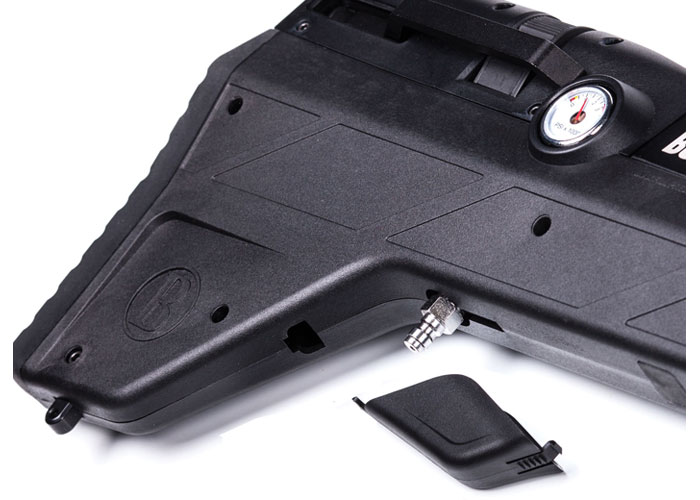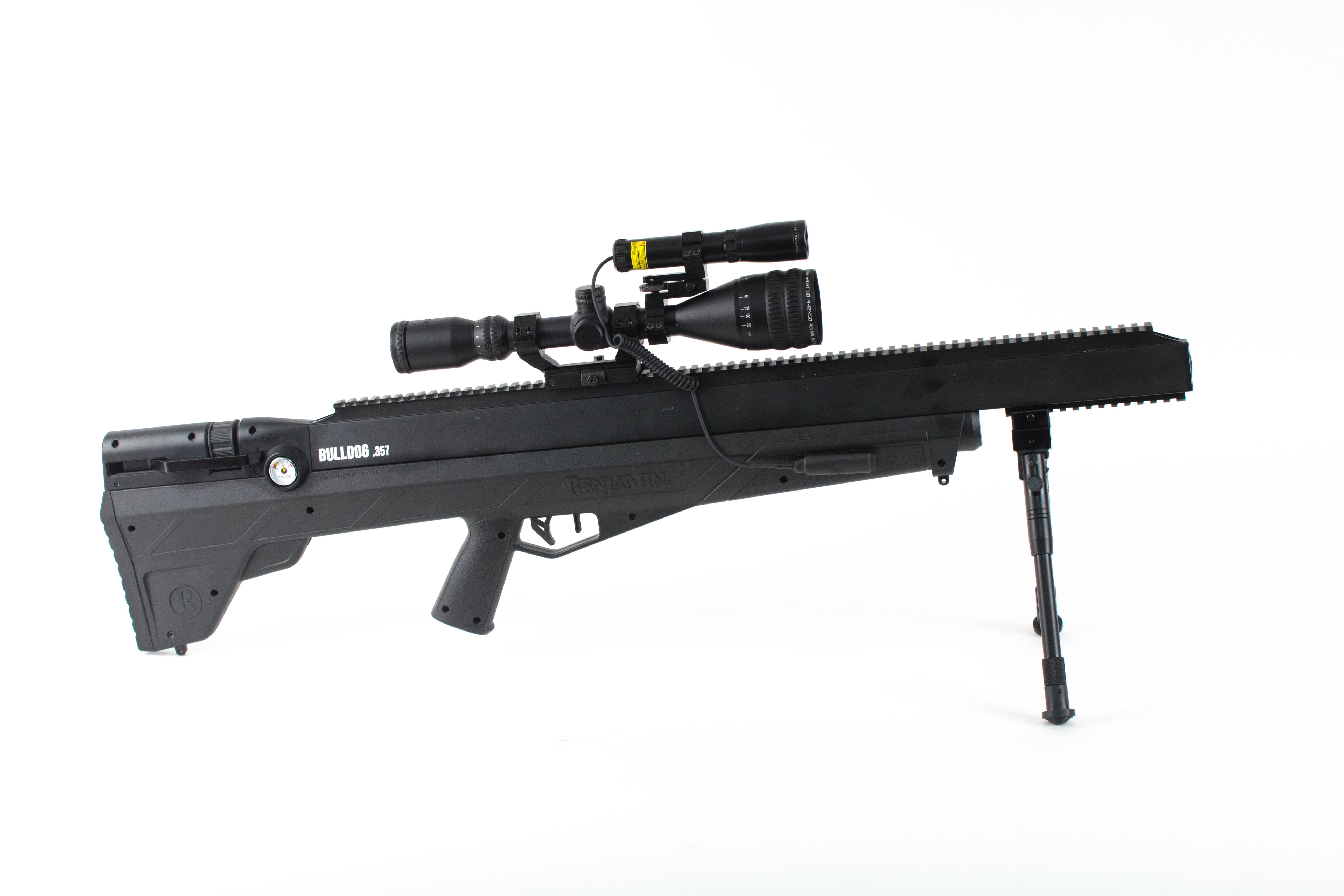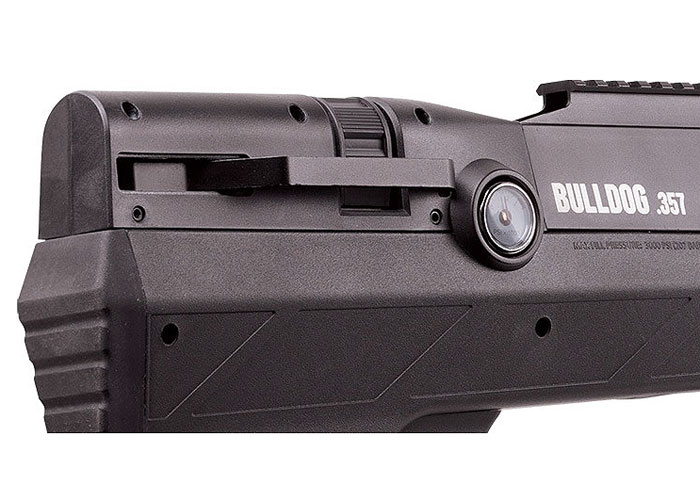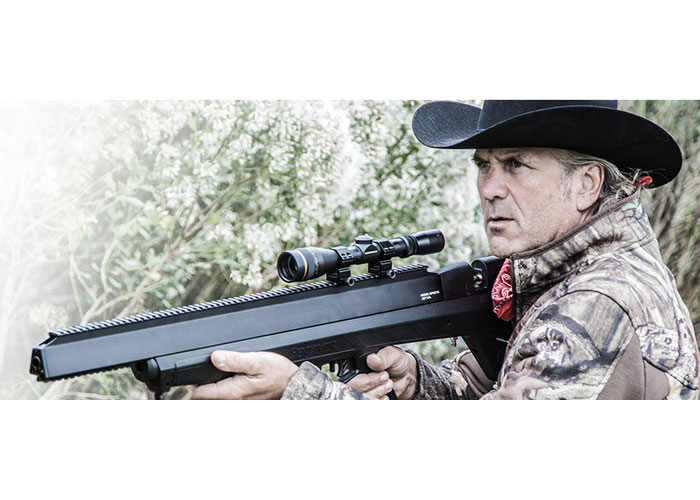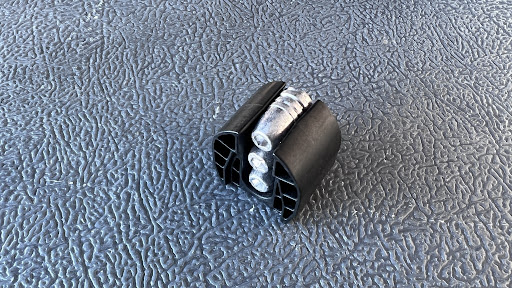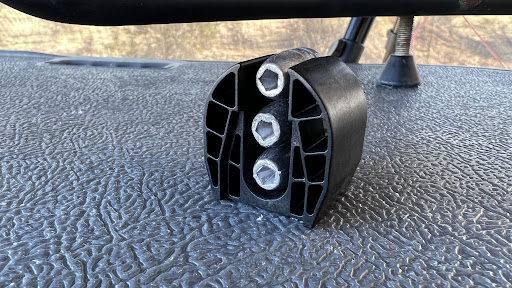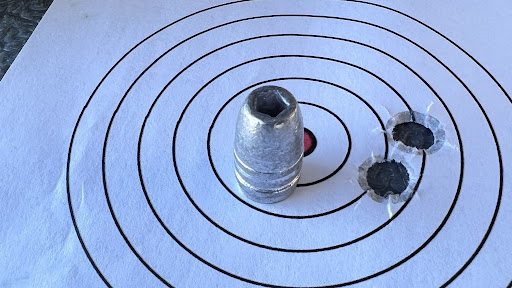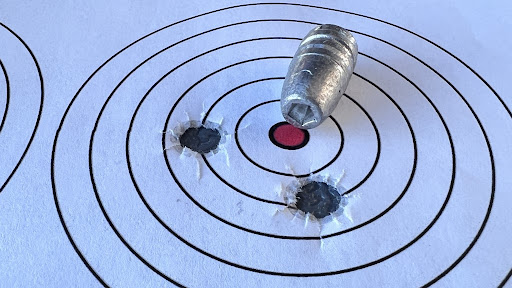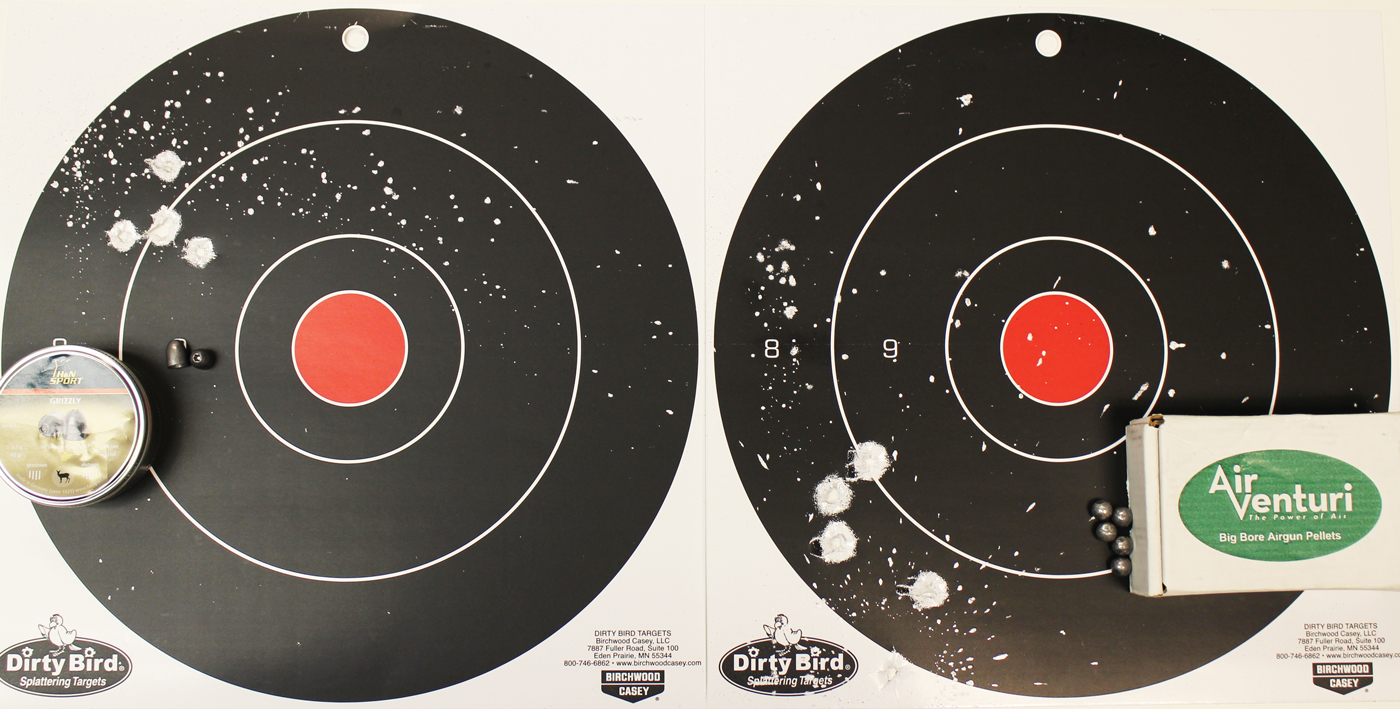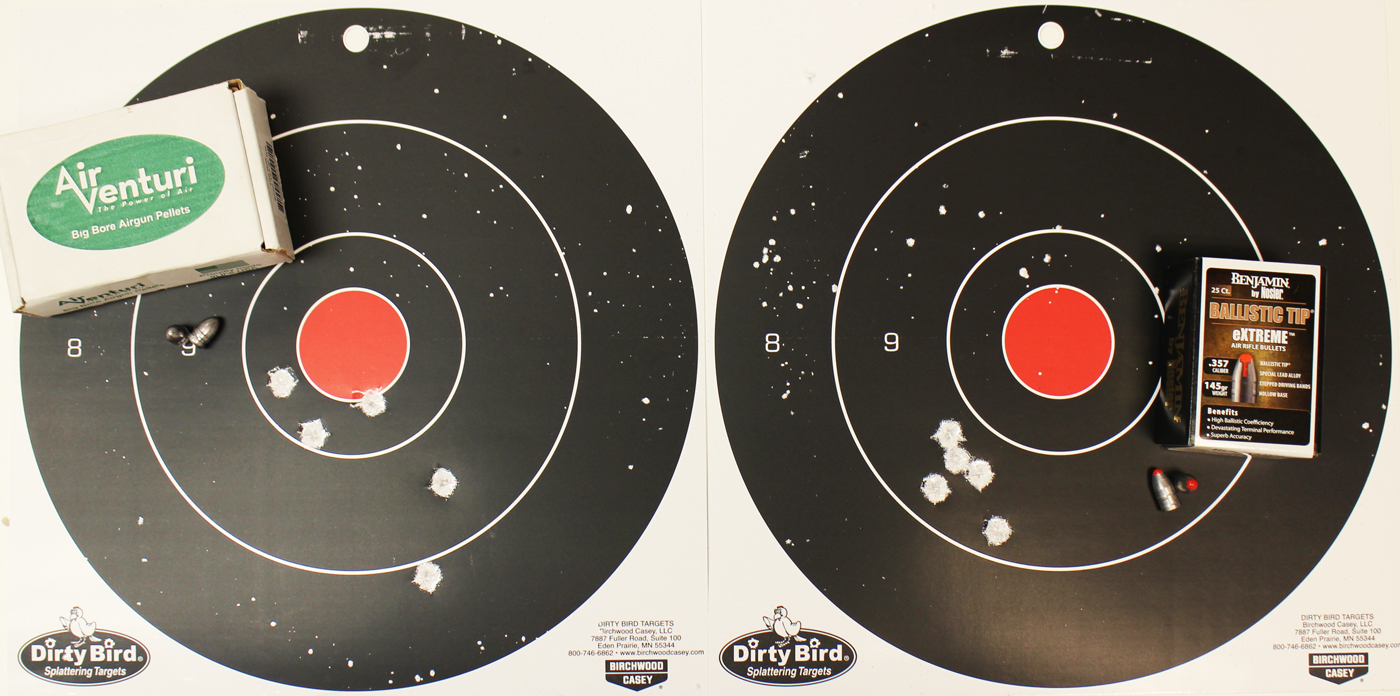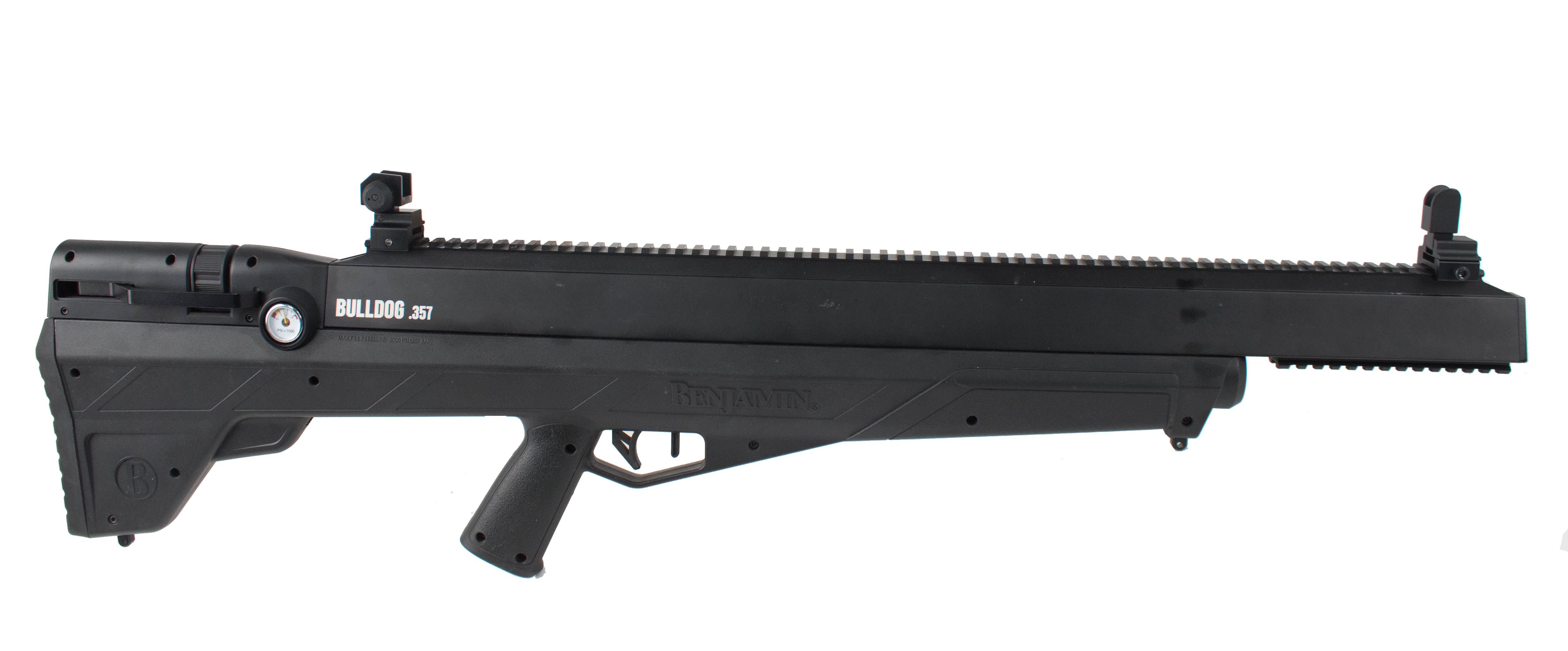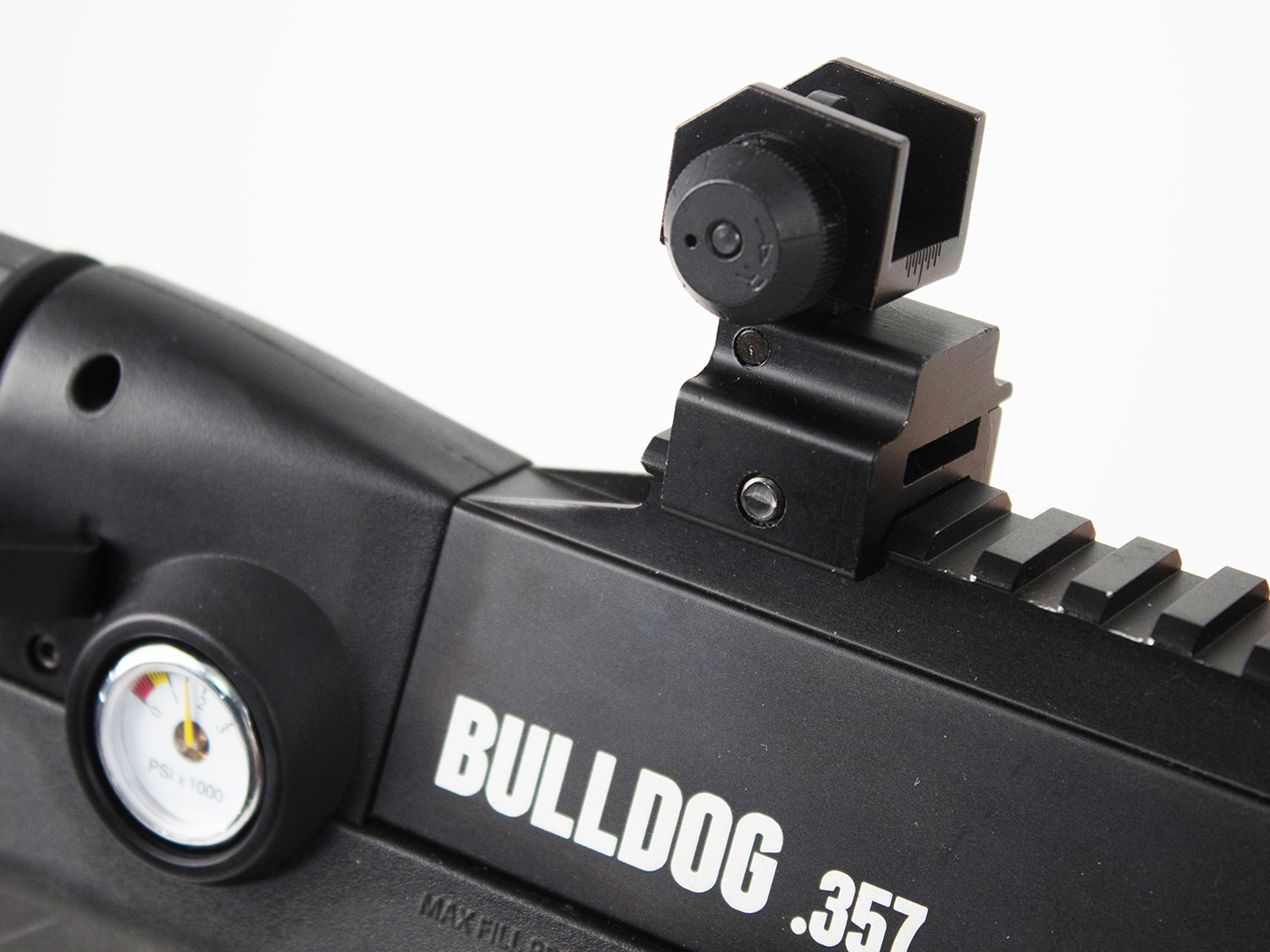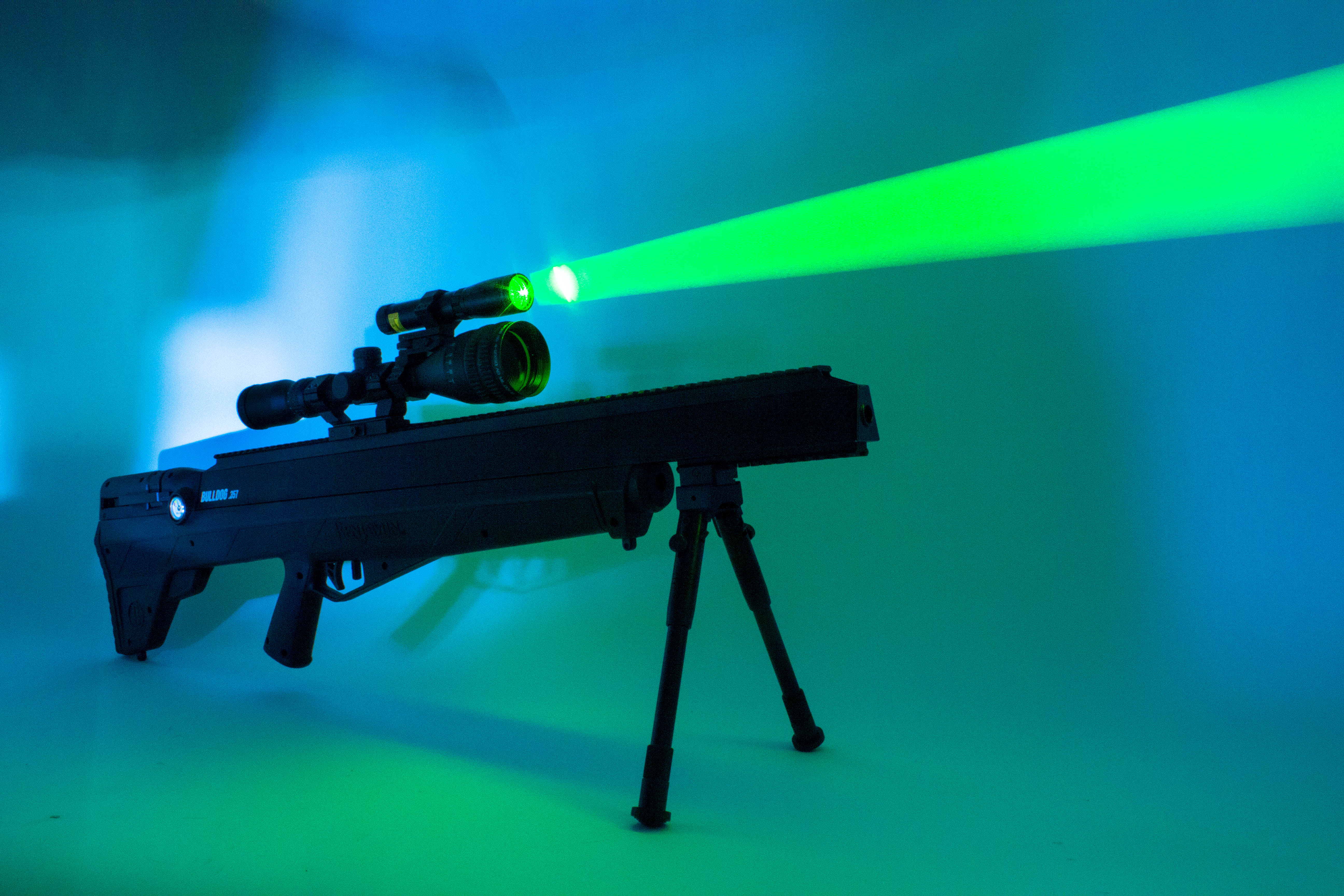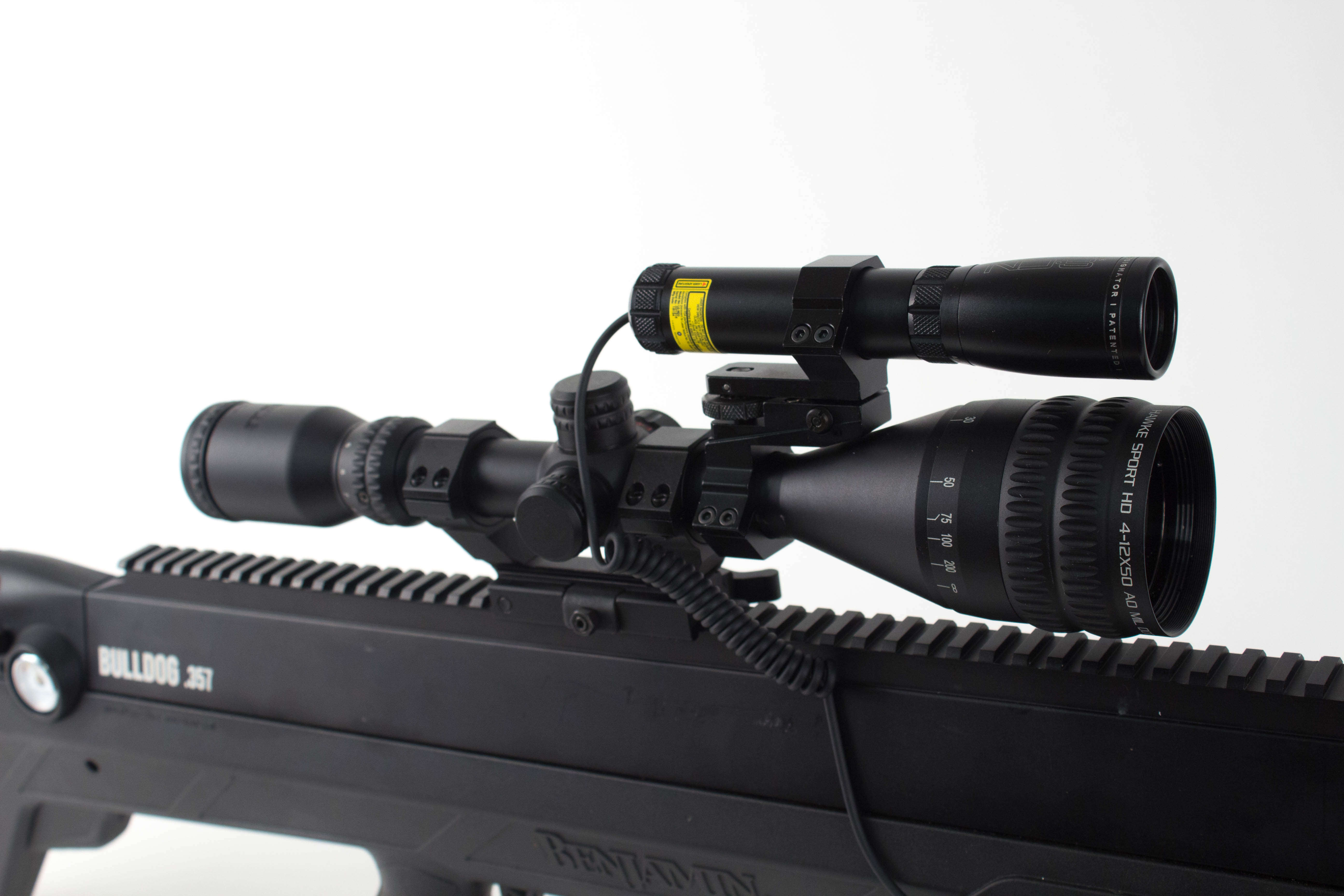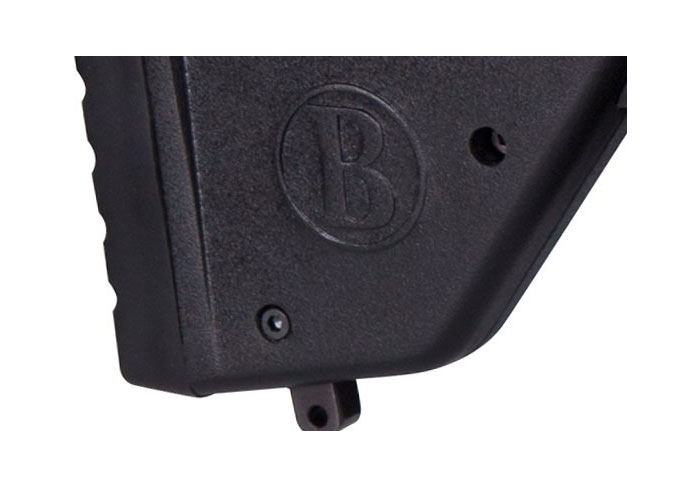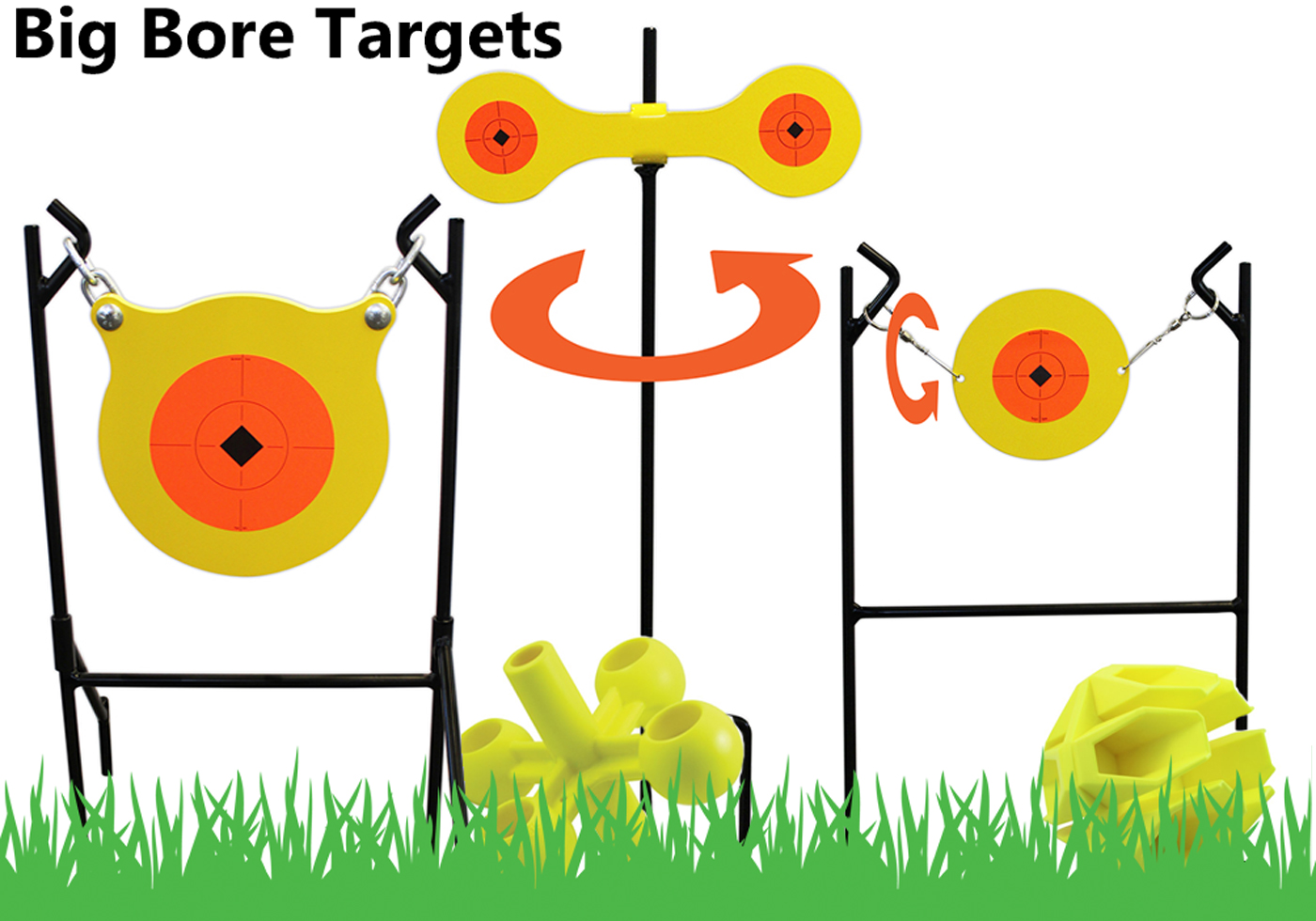Definitive Guide to Benjamin Bulldog
If you're an airgun hunter looking for maximum power from your big-bore airgun, then you're probably looking at single-shot options. And it makes sense. Most multi-shot options are not optimized for power. But what if there was an accurate, multi-shot option that didn't compromise on power? Well, that's what we'll be looking at today. The Benjamin Bulldog .457 features over 400 foot-pounds of energy, a 3-shot magazine, and out-of-the-box hunting accuracy with affordable cast slugs.
The Bulldog comes in 2 different calibers, a .357 and .457 option. The rifle designs are very close, with just small differences. The .357 has an upper 26" Picatinny rail and a 5.50" long accessory rail. It also includes a 5-round rotary indexing clip, an ambidextrous stock, and a rubber recoil pad. While the differences don't stand out, they are noticeable between the two options.
The .457 offers a longer tube to give the larger caliber more power, which comes at the expense of how many shots the rifle will have at full power. Being around 450 FPE, the size of the tank allows for all 3 shots from its gravity-fed tray to be at lethal power. Another main difference between the two is that the .457 doesn't include the 5.50" under-barrel rail, but it does come with a threaded M18 muzzle end cap.
The Benjamin Bulldog .457 is the big brother to the .357. It's a bullpup design, and its shell is composite and metal. The bullpup configuration results in an overall shorter length of the gun without shortening the actual barrel. This makes for a lighter gun (7.7 lbs at .357 and 8.7 at .457) and easier maneuverability, which is highly desirable for hunting. The overall lengths are 36" for .357 and 36.3" for .457. The rifled barrels are a whopping 28" for .357 and 28.5" in the .457 caliber. That's just over 8" longer than the popular Benjamin Marauder and 5" longer than the recently released Hatsan .357 Carnivore. The grip is nothing special, but there is a comfortable rubber buttpad to help with the recoil. The trigger and manual safety are comfortably positioned and easy to use.
The Bulldog trigger is probably the gun's biggest highlight. Typically, we are very critical of bullpup triggers. Due to the use of a trigger operating rod running from the trigger back to the sear, bullpups typically have a very sloppy trigger. The Bulldog is an exception to this rule; the first stage is long but very light, and the second stage breaks very cleanly. You almost only have to think about this rifle going off to get the trigger to break. Also note that the safety is manual, which is nice for quick second shots when needed during a hunt. The safety is located in front of the trigger, not everyone's favorite position, but we don't mind (though the safety itself is surprisingly plastic).
There's a Picatinny rail that runs the length of the top of the Bulldog, making it easy to mount any optic or even flip-up open sights if that's your thing. The .457 features a 28.5" precision rifled barrel with a "baffle-less" sound trap meant to help tame the report. Our Bulldog hit over 120 DB at the bench. Understandable for a gun pushing this much air, but important to note that this is not backyard-friendly. You will want to use ear protection for sure. But that's not your only option. There are M18 threads if you want to use a moderator to tame it down further. Underneath, you'll find sling mounts, which are great to see. We wish the front sling point could have been fitted for a bipod. It's good as a sling mount as it sits, and that's about it.
Under the hood, you'll find a 440cc air cylinder that fills to a maximum of 3000 psi. We consider this an important feature. While many big bore airguns require much more pressure, like up to 4500 psi, making them harder to fill at the bench and in the field, sticking with 3000 psi means hunters can carry small, lightweight 4500 psi pony bottles to top off their Bulldog throughout the hunt. Additionally, it's a lot easier to hand pump to 3000 psi than 4500 psi if needed.
Getting the Bulldog ready to go will require filling it via the foster quick disconnect behind the grip. There's an easy-to-read gauge on the right-hand side of the receiver to let you know how much pressure you have on tap. You'll want to ensure you fill it to 3000 psi each time for optimal performance.
As mentioned above, you'll need to add an optic to the 26" Picatinny optics rail. We suggest using a riser in addition to high mounts to achieve a comfortable position. Because there's no drop to the cheekpiece, having the scope close to the rail makes it very uncomfortable, if not impossible, to get proper eye relief. As a quick note, don't skimp on your optic. The Bulldog is worthy of good glass, especially if you are taking this out for serious hunting. We'd recommend something like the Hawke Frontier or Sidewinder line.
Pros & Cons of the Bullpup Design
Shooting the Bulldog is somewhat of a polarizing affair; you either love it or hate it. The bullpup design places the action at the back of the rifle, closer to the shooter's face. This design allows for a longer barrel but still keeps the gun's overall length manageable. However, this also means giving up some ergonomics as the action lever to cycle the rifle is no longer in its traditional spot.
Having the action in the back of the gun requires the shooter to relearn the mechanics of operating the rifle and does have a bit of a learning curve to get used to. One thing to keep in mind is that left-handed shooters will want to ask Airgun Depot to switch the bolt to the left-hand side. Just make sure you call our call center when ordering if you're a lefty. If you fail to have it moved, lefties will find it very awkward as the cocking lever cannot be operated without breaking your cheek weld and sight picture. You would have to move your face away from the rifle in order to operate the lever.
Once your gun is scoped and filled with air, it's time to get down to loading and shooting. We tested the heaviest slug that would fit in the 3 shot magazine. Let's talk about the magazine for a moment. It's a gravity-fed mag that simply lets the next round drop into place. Provided the bullets are .457, they should not fall out if you tip the gun. But we can't say that if you accidentally tried .454 or .452. This is a .457, so make sure you choose your ammo accordingly. We ran the Hunters Supply .457 298 grain hollow point slugs for our tests. We would have preferred using the 310 grain, but they were too long for the magazine.
The .357 Bulldog comes with one 5-shot magazine. The magazine fits flush with the stock, a nice feature so it doesn't obstruct your sightlines even if using iron sights. One thing to note is that the magazine is designed for longer projectiles, such as the Nosler bullets; this can make loading smaller projectiles, like JSB pellets or round balls, a bit tricky. They tend to fit looser in the magazine and can fall out while loading. But not a bad trade-off compared to other big bore magazines, which are limited to shorter pellets. Upon firing your last shot, the mag blocks the bolt, so you know it's time to reload.
Performance and accuracy
On paper, the .457 Bulldog can produce up to 3 shots. The 3rd shot really dropped, so we focused on 2 shot groups for our tests. Our first shots registered around 798+/- FPS, with the 2nd shots coming in around 779+/- FPS. These results were very consistent across all our testing of the .457. Crosman claimed the .357 Bulldog could achieve 200 foot-pounds of power; the best our full-production Bulldog could reach at the time of testing was right around 180 foot-pounds.
The big difference between the .357 and .457 is the tube. The .357 fills to 340cc while the .457 gets just around 440cc. While the .357 will produce more shots per fill, the .457 will produce more power around 450 FPE. The .457 uses that extra air from the larger tube to produce more power instead of more shots, usually getting off 3 shots at lethal power.
While the .357 gets 10 shots per fill, the energy we get from the .457 shots more than makes up for it. Our first shot always topped 400 foot-pounds, with our 2nd shot coming in just under. The extreme spread between shots one and two averaged about 20+/- fps. Not only do you have ample energy on tap, but you have a great caliber to back it up. While we only tested one ammo option, there are dozens on the market, making the .457 Bulldog a great choice with optimal flexibility in the field.
Accuracy at 50 yards was easy to achieve right out of the box, provided you can manage the recoil and the report. It's got a kick, and it's got a bark. If you are used to shooting only airguns and not firearms, it may take some time to get used to. Fortunately, we didn't have any issues putting lead on target. If you do your part, you should see decent groups at 50 yards all day long, with optimal groups coming in under 1" CTC.
.457 Caliber Results
.357 Caliber Results
Accuracy on this rifle is fairly adequate but it's more of a sledgehammer than a scalpel. Groups of about 1.5 inches are attainable if you're using the right ammo. The Benjamin Noslers worked extremely well for us as well as the H&N Grizzly. Another reviewer had trouble with the Grizzlies but we found in our production rifle that they performed exceptionally and really flattened out well. As expected the round ball ran a bit more wild. We also had troubles with the Air Venturi round nose. All our testing was done at 50 yards.
Crosman claims the .357 Bulldog can achieve 200 ft lbs of power, the best our full production Bulldog could reach was right around 180 ft lbs. Certainly our high altitude doesn't help, but the Noslers didn't reach the 800 fps that is advertised.
The Bulldog has a 3,000 psi fill pressure (207 bar). You should expect to get 10 shots out of the tank on the .357 before things really drop off. The big difference between the .357 and .457 is the tube. The .357 fills to 340cc while the .457 gets just around 440cc. While the .357 will produce more shots per fill, the .457 will produce more power, right around 450 FPE. The .457 uses that extra air from the larger tube to produce more power instead of more shots, usually getting off 3 shots at lethal power.
We preferred to top off after each magazine (easily done with an Air Venturi Carbon Fiber Buddy Bottle if you're in the field) The standard Foster male fill nipple is located underneath the gun behind the trigger. Be careful with the plastic cover as we feel this would easily be lost. It's one of the few cheaper design aspects of an otherwise well-made gun.
Accessories
There are no sights that come with the Bulldog, but with 26" of Picatinny rail on top you can accessorize in a variety of ways, even something as straightforward as picking up a set of iron sights, we suggest some iron sights from NC Star. The .357 also comes with an under-barrel rail so you can go all out on your attachments.
The Bulldog is a perfect gun to hunt with, and why limit yourself to just daylight hours when you can also hunt at night! With this in mind, Airgun Depot has put together an exclusive kit called the Benjamin Bulldog Nightdog Combo. This combo includes a bi-pod, Hawke Sport HD 4-16x50 scope, and a BSA Long Distance Laser Designator. What's a laser designator you ask? Basically it's a great (and far cheaper) alternative to more costly night vision scopes. It throws out to 250 yards a soft green light that will illuminate your target (and match what you see in your scope) all activated by a pressure switch. Because it's green your target won't react.
The Bulldog comes with a pair of sling swivel studs, so make sure to pick up a Benjamin sling, especially if you outfit a few accessories as the initial 7.7 lbs (8.7 for .457) can quickly exceed 10 lbs with those accessories on top. It won't feel heavy when shouldering do to the balanced weight, but you still will want to have a sling for long hunts.
The Bulldog will chew up traditional airgun targets. But you still need to put in some range time to familiarize yourself before setting out on a hunt. Airgun Depot has a line of big bore targets that will stand up to the 175+ ft lbs of power that will be hitting it.
It's important to stress that this gun is very powerful and must be treated with respect. Don't be lulled into thinking you can shoot this casually like any other airgun (though you shouldn't be doing that either!). We suggest using a gun lock to ensure that safety is always a priority. Join in on the conversation and leave your thoughts and impressions of the Benjamin Bulldog. And don't forget to share this page with others that you know would be interested in the in depth review we've put together on this gun.
Final thoughts
Big game airgun hunters have been taking large game with less power for a long time. We can remember when 200 foot-pounds was "more than enough" to take whitetail and other game. Recently, there's been a real push to promote the "need" for more power, but accuracy, consistency, trigger time, and confidence in your gear make for a successful hunt. More power can be useful, but it's no substitute for ethical hunting.
Given that the Bulldog can produce two 400 FPS +/- shots with consistent accuracy, we feel it's an ideal hunting airgun for those who want a compact, powerful, convenient, multi-shot option. With the ability to have two nearly identical shots from a full cylinder and a third in reserve, the Bulldog certainly takes things to another level.
If you have questions about the Benjamin Bulldog .457 or the .357, please don't hesitate to contact us here at Airgun Depot. We are always ready to help.
